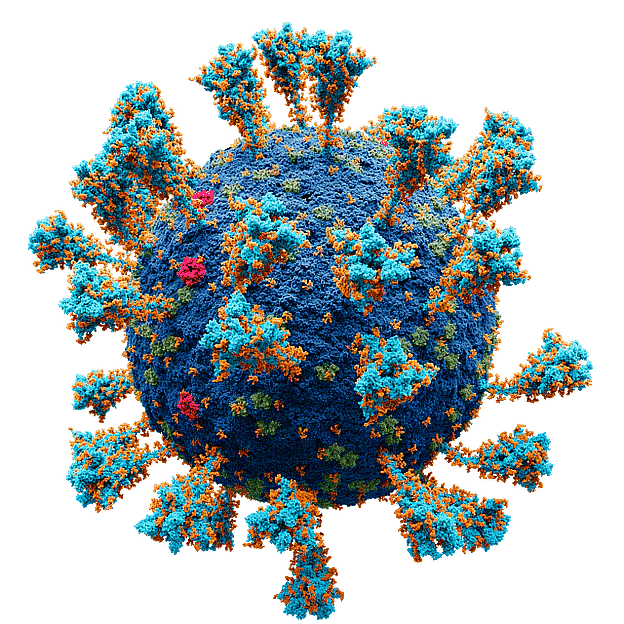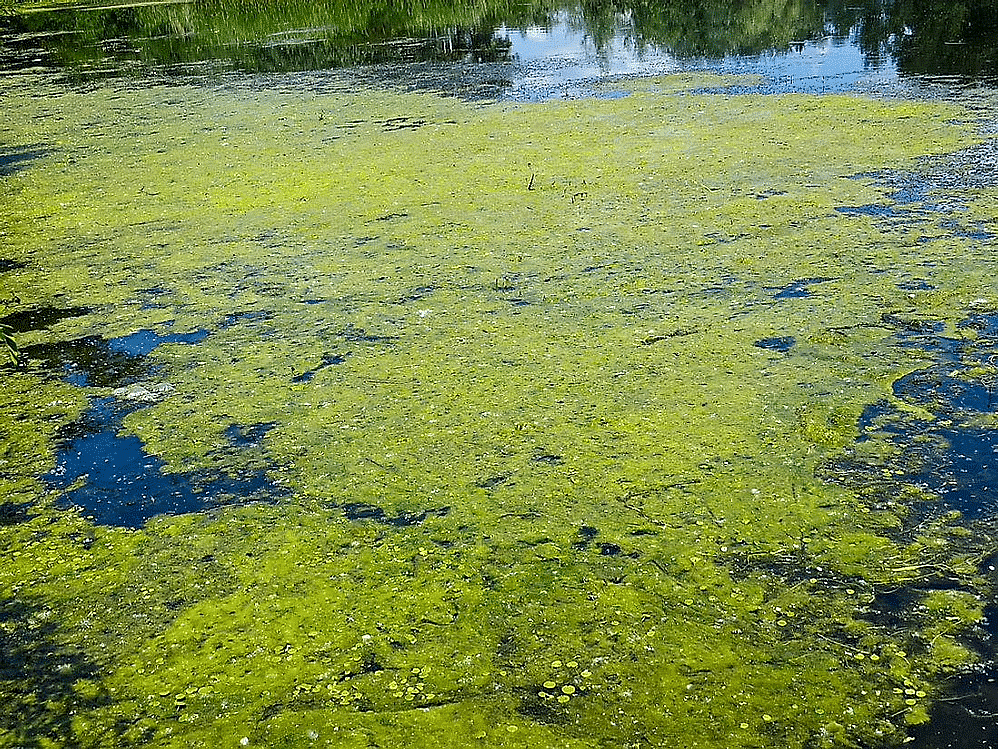Class 8 Science - Question Answers Microorganisms Friend or Foe
Q 1. Write short notes on
(a) Bacteria
(b) Viruses
Ans.
(a) Bacteria: Bacteria are single-celled microorganisms.
- They can survive in all types of environments, ranging from ice-cold climates to hot springs and deserts to marshy lands.
- Bacteria can be seen under a microscope which enlarges their image from a hundred to a thousand times.
- They are of spiral shape or rod shape.
 Bacteria: Rod Shaped
Bacteria: Rod Shaped
(b) Viruses:
- Viruses are microscopic infectious agents that act as non-living outside host cells and inside host cells become living and show reproduction.
- It can affect all kinds of an organism including animals, plants, and bacteria.
- Common ailments like cold, cough, and influenza (flu) are caused by viruses; serious diseases like chicken pox and polio are also caused by viruses.
 VirusQ 2. Write short notes on
VirusQ 2. Write short notes on
(a) Protozoa
(b) Algae
Ans.
(a) Protozoa:
- Protozoa are unicellular animals.
- Some are free-living, and others are parasites.
- Several parasitic protozoans cause diseases in human beings, domestic animals, and plants.
- For example, Plasmodium, a protozoan, causes malaria.
(b) Algae:
- Algae are green substances that float on the surface of a pond, lake, river, stagnant water, moist soil, stones.
- They tend to grow on wet surfaces.
- Therefore, they can synthesize their own food.
- They are found in water or in very moist places.
 AlgaeQ 3. What do you mean by friendly microbes?
AlgaeQ 3. What do you mean by friendly microbes?
Ans.
- In agriculture, microorganisms are used to increase soil fertility by nitrogen fixation.
- The bacterium Lactobacillus helps in the formation of curd.
- Bacteria are also involved in the making of cheese, pickles and many other food items.
- The microorganisms, yeast is used for the commercial production of alcohol and wine.
- Acetobacter acetic is used for producing acetic acid from alcohol.
Q 4. How is curd formed?
Ans.
- Milk is turned into curd by bacteria.
- Curd contains several microorganisms including Lactobacilli bacteria.
- It promotes the formation of curd from milk.
- When a little pre-made curd is added to warm milk, then Lactobacilli bacteria present in curd multiply in milk and convert the lactose sugar into lactic acid.
- This lactic acid then converts milk into curd.
Q 5. Why is yeast used in the baking industry for making bread, cakes, and pastries?
Ans.
- Yeast reproduces rapidly and produces carbon dioxide during respiration.
- Bubbles of gas fill the dough (a mixture of whole wheat flour or maida and some sugar and water) and increase its volume.
- This explains the use of yeast in the baking industry.
 Dough formation from Wheat flour
Dough formation from Wheat flour
Q 6. Define the process of fermentation and its application.
Ans.
- Fermentation is a biological process in which sugars are converted into alcohol by the action of microorganisms, primarily yeast and bacteria.
- This process is widely used in the production of alcoholic beverages such as wine, beer, and cider.
- During fermentation, yeast is cultivated on natural sugars found in grains like barley, wheat, and rice, as well as in crushed fruit juices.
- The resulting products not only serve as drinks but also play important roles in food preservation and flavor enhancement.
Q 7. How are antibiotics related to microorganisms?
Ans.
- Antibiotics are medicines that kill or stop the growth of disease-causing microorganisms and they are prepared from microorganisms.
- For example, Streptomycin, tetracycline, and penicillin are some of the antibiotics prepared from microorganisms like fungi and bacteria.
Q 8. Why are vaccines important?
Ans.
- Vaccines produce antibodies in our body to fight against disease-causing microbes entering our body.
- Diseases like cholera, tuberculosis, smallpox, and hepatitis can be prevented by vaccination.
- Oral Polio Vaccine (OPV) is administered as drops to children.
 Oral Polio Vaccine
Oral Polio Vaccine
Q 9. What is the main motto of the pulse polio program?
Ans.
- The Pulse Polio Initiative was started with the objective of achieving universal immunization under the Oral Polio Vaccine.
- It aimed to immunize children through improved social mobilization, plan mop-up operations in areas where poliovirus has almost disappeared, and maintain a high level of morale among the public.
Q 10. Write short notes on the medicinal use of microorganisms.
Ans.
- Antibiotics are medicines that kill or stop the growth of disease-causing microorganisms and they are prepared from microorganisms.
- For e.g. streptomycin, tetracycline, and penicillin are some of the antibiotics prepared from microorganisms like fungi and bacteria.
Q 11. Write short notes on increasing soil fertility by the action of microorganisms.
Ans.
- Bacteria increase soil fertility through nutrient recycling such as carbon, nitrogen, sulfur, and phosphorus.
- Bacteria decompose dead organic matter and release simple compounds in the soil, which can be taken up by plants.
- Nitrogen-fixing bacteria fix atmospheric nitrogen and increase the nitrogen content of the soil, which can be readily absorbed by plants. They also improve soil structure and increase the water-holding capacity of the soil.
 Rhizobium: Nitrogen Fixing Bacteria
Rhizobium: Nitrogen Fixing Bacteria
Q 12. How do microbes clean our environment?
Ans.
- The environment is cleaned up by microorganisms.
- Dead and decaying plant and animal materials are broken down by them into simpler components, that are then consumed by other plants and animals.
- They are therefore employed to degrade dangerous chemicals.
Q 13. Why are some microorganisms considered harmful?
Ans.
- Some microorganisms are considered harmful because they can cause diseases in humans, plants, and animals.
- For example, Mycobacterium tuberculosis is a bacterium that causes tuberculosis in humans, while Salmonella typhi is responsible for typhoid fever.
- Additionally, viruses such as the rhinovirus and influenza virus cause common colds and influenza, respectively.
- Furthermore, certain microorganisms lead to the spoilage of food, clothing, and leather items, resulting in economic losses and health risks.
- Thus, these harmful microorganisms pose significant threats to health and hygiene.
Q 14. List all possible ways by which pathogens can enter our body.
Ans.
- Pathogens are disease-causing microbes, which invade our body through openings including the eyes, nose, and mouth through open wounds, urogenital openings, and also through mosquito bites.
- These pathogens invade the cell and tissue of a host and cause severe infectious disease.
 Pathogens
Pathogens
Q 15. Define communicable diseases with examples.
Ans.
- There are some microbial diseases that can spread from an infected person to a healthy person through the air, water, food, or physical contact.
- Such a kind of disease is called communicable disease.
- Example: Cholera, Chickenpox, Tuberculosis.
Q 16. Why we should keep a handkerchief on the nose and mouth while sneezing?
Ans.
- Sneezing releases fine droplets of moisture into the air, which can contain thousands of viruses.
- These droplets can easily spread infectious agents, particularly in crowded or enclosed spaces.
- If a person with a cold sneezes without covering their mouth and nose, the viruses can become airborne.
- Healthy individuals can inhale these viruses, increasing the risk of them becoming sick.
- Using a handkerchief or tissue while sneezing helps to:
- Contain the droplets and minimize their spread in the air.
- Protect others from inhaling infectious agents.
- Promote good hygiene practices to prevent the transmission of illnesses.
 Always sneeze while covering your mouth and nose
Always sneeze while covering your mouth and nose
Q 17. How do houseflies spread diseases?
Ans.
- Houseflies sit on the garbage and animal excreta where pathogens stick to their bodies.
- These pathogens get transferred to uncovered food when these flies sit on uncovered food items and the person consuming these food falls sick.
Q 18. What are the advantages of sealed air-tight packing for the storage of food items?
Ans.
- Prevents Microbial Growth: Sealed airtight packets effectively block the entry of microbes, reducing the risk of contamination.
- Preserves Freshness: They help maintain the freshness of food by preventing spoilage caused by air exposure.
- Increases Shelf Life: Airtight packaging extends the shelf life of food items, making them safe for longer periods.
- Prevents Toxins: By limiting exposure to air and moisture, these packets prevent the formation of harmful toxins.
- Reduces Waste: Longer shelf life means less food waste, benefiting both consumers and producers.
Q 19. Write short notes on diseases causing microorganisms in animals.
Ans. Microorganisms as Pathogens: Various microorganisms are responsible for causing diseases in animals.
Anthrax:
- Caused by the bacterium Bacillus anthracis.
- It is a serious disease that affects both humans and cattle.
Foot and Mouth Disease:
- Caused by a virus (specifically the Foot-and-Mouth Disease Virus).
- Primarily affects cattle and can lead to severe economic losses in livestock production.
Q 20. Write short notes on diseases causing microorganisms in plants.
Ans. There are some microorganisms that cause disease in plants like wheat, sugarcane, rice, potatoes, oranges, and apples. Citrus canker disease is caused by bacteria in plants, and rust of wheat disease in wheat plants is caused by fungi. These diseases reduce the yield of crops and can be controlled by using certain chemicals that kill microbes.
|
90 videos|273 docs|44 tests
|
FAQs on Class 8 Science - Question Answers Microorganisms Friend or Foe
| 1. What are the beneficial roles of microorganisms in our daily lives? |  |
| 2. How do microorganisms cause diseases in humans? |  |
| 3. What is the difference between helpful and harmful microorganisms? |  |
| 4. How can we prevent diseases caused by harmful microorganisms? |  |
| 5. Why are microorganisms important in the ecosystem? |  |

|
Explore Courses for Class 8 exam
|

|


















